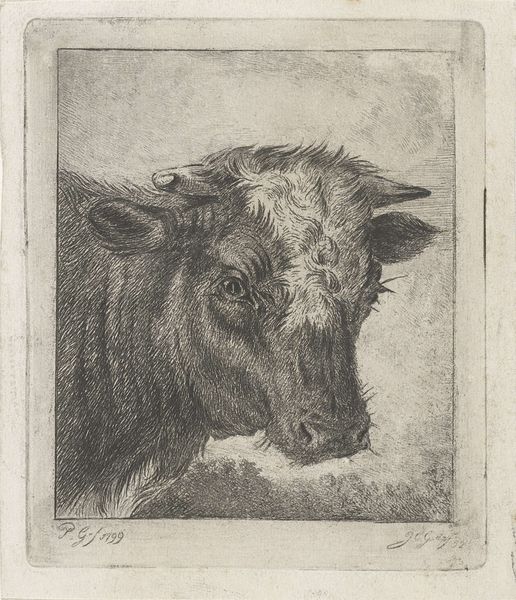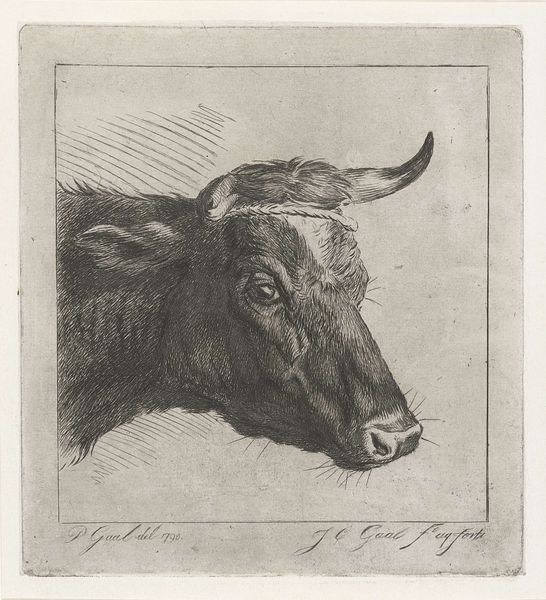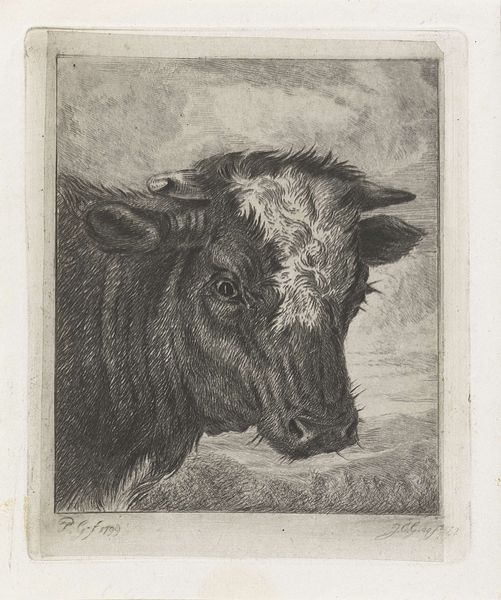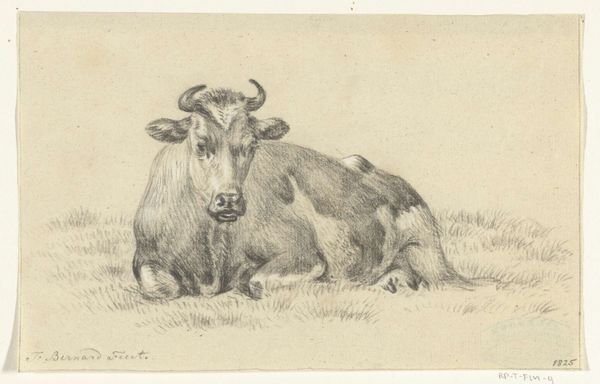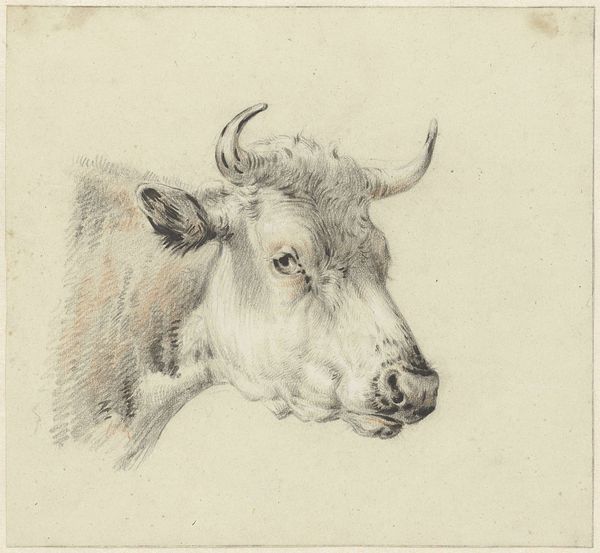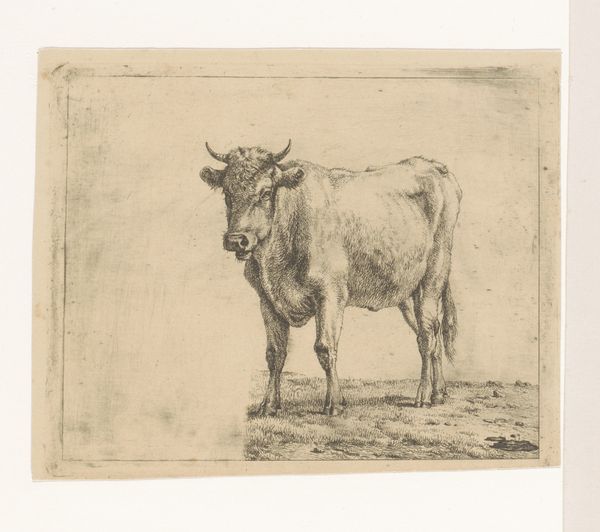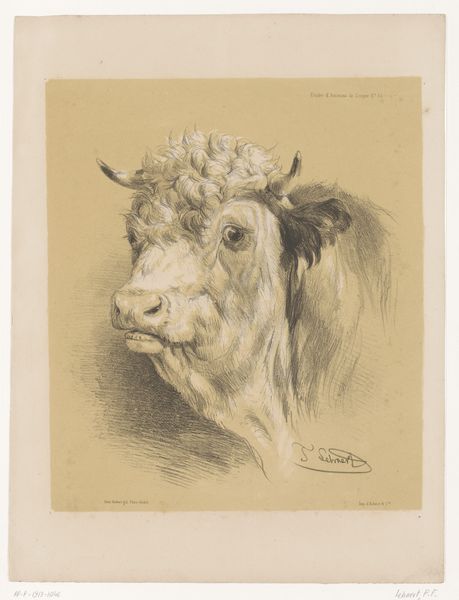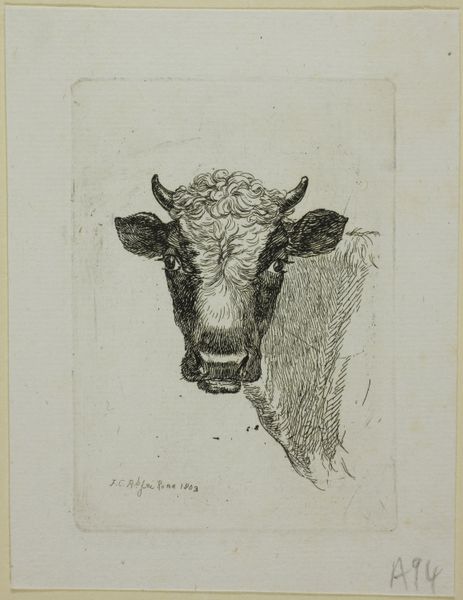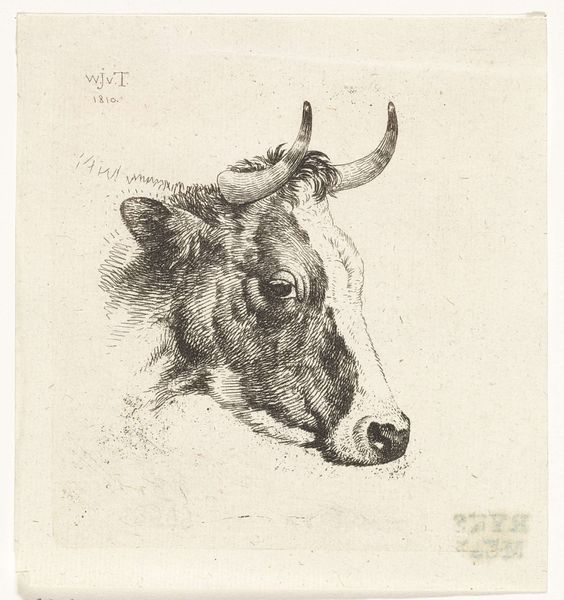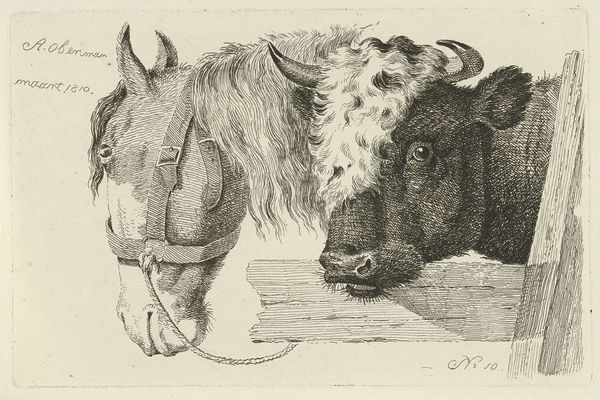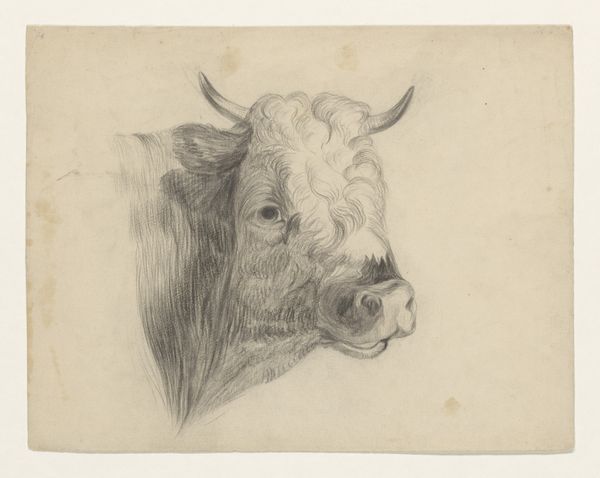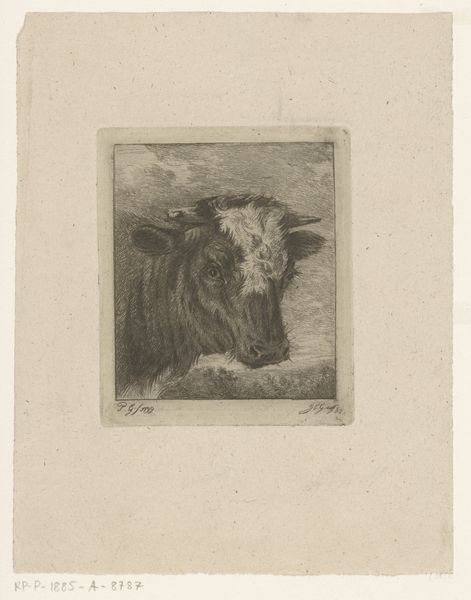
etching
#
portrait
#
etching
#
realism
Dimensions: height 112 mm, width 93 mm
Copyright: Rijks Museum: Open Domain
Jacobus Cornelis Gaal created this etching of a cow’s head sometime before his death in 1866. An etching like this begins with a metal plate, probably copper, covered in a waxy, acid-resistant ground. The artist scratches an image into this ground, exposing the metal, and then immerses the plate in acid. This etches the lines into the plate. Ink is then applied and the surface wiped clean, leaving ink only in the etched lines. Finally, the plate is pressed onto paper. The resulting image is defined by the quality of line: notice how Gaal varies the density and thickness to create shading and texture, giving the cow a real sense of presence. While etching was considered a relatively accessible medium, compared to painting, it still required considerable skill and knowledge of materials. Prints like this made art more accessible to a wider audience, reflecting a growing interest in rural life and agricultural prosperity. Looking closely at the making of this print reminds us that art is not just about the subject, but also about the skilled labor and material processes that bring it into being.
Comments
No comments
Be the first to comment and join the conversation on the ultimate creative platform.
